This article dives into essential behavior reduction strategies for parents, highlighting how personalized approaches can truly make a difference in managing children's behavior. It covers various effective strategies, like:
Research backs these methods, showing they can enhance children's behavioral outcomes and encourage positive changes. Let’s explore this together!
In a world where understanding and managing children's behavior can often feel overwhelming, parents are always on the lookout for effective strategies to foster positive changes. 🌟 This article explores ten essential behavior reduction strategies that empower caregivers to create supportive environments, enhance communication, and promote lasting behavioral improvements.
But with so many approaches available, how can parents determine which methods will truly resonate with their child's unique needs? 🤔 By diving into the nuances of these strategies, we may just unlock a brighter future for our children and families. Let’s explore this together!
At Rori Care, we specialize in ABA Therapy, crafting personalized reduction plans that truly cater to each child's unique needs. It all starts with a thorough evaluation, which is essential for understanding the strengths and challenges of every child. This foundational step is key to developing effective, tailored interventions.
Our expert behavior analysts use data-informed insights to create customized behavioral plans. These plans focus on clear, measurable goals for behavior modification and development by implementing behavior reduction strategies, ensuring that care is as personalized as possible. Research shows that these individualized approaches can significantly boost intervention effectiveness, leading to real improvements in communication, social skills, and overall development.
Did you know that ABA therapy boasts an impressive success rate of over 89% for individuals with autism spectrum disorder (ASD)? This success is particularly pronounced when families are actively involved and insurance coverage is in place. By empowering families, we foster positive behavioral changes, helping every child thrive in their environment.
Continuous assessment and adjustment are also vital. By measuring actions like frequency and duration, we can adapt strategies to meet the evolving needs of each child, enhancing therapeutic outcomes. Plus, collaboration between parents and educators plays a crucial role in improving ABA therapy results. It brings valuable insights into a child’s progress and needs.
Let’s explore this journey together! We’re here to help you every step of the way, ensuring your child receives the best support possible.
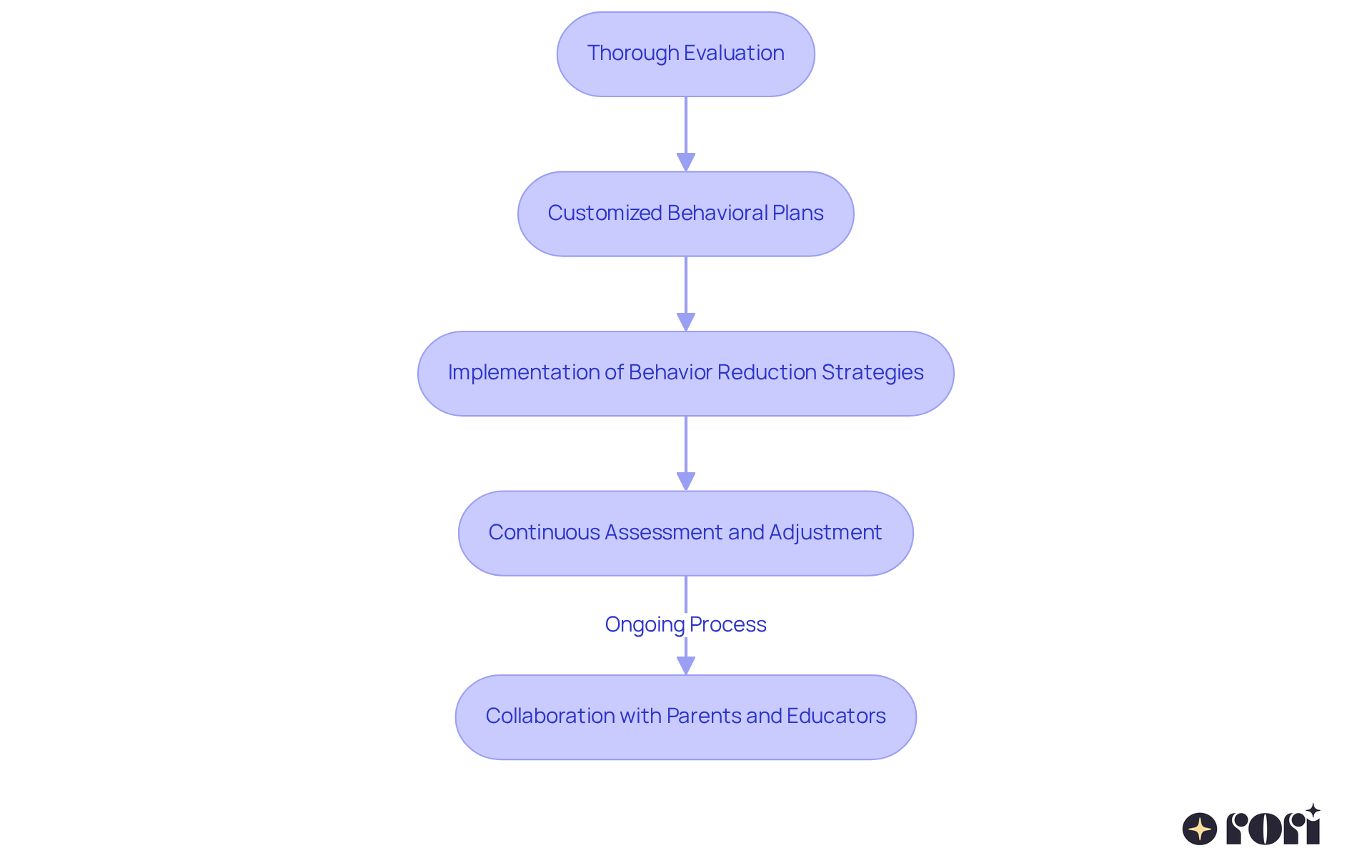
Positive reinforcement is a fantastic approach rooted in the principles of Applied Behavior Analysis (ABA). It involves offering rewards or incentives to encourage preferred actions in young individuals. This could be verbal praise, tangible rewards like stickers, or even privileges such as extra playtime. For instance, imagine a young student finishing their homework independently—what a great moment! They might earn a sticker or some extra playtime as a reward. Consistently reinforcing these positive actions boosts the likelihood of them happening again, aligning perfectly with the goals of early intensive intervention (EIBI) to enhance learning and social skills in children with autism.
To make this approach even more effective, it's essential for parents to be specific about the actions they’re reinforcing. Clear communication helps kids understand which behaviors lead to rewards, fostering a sense of accomplishment and motivation. Research shows that positive reinforcement is one of the most effective behavior reduction strategies, as it not only improves immediate behaviors but also encourages lasting changes, making it preferable to punitive methods. This approach empowers caregivers by equipping them with the knowledge and tools needed to actively support their children’s developmental goals and implement behavior reduction strategies, enhancing their ability to provide informed assistance at home.
Additionally, studies suggest that prompt reinforcement after a desired action strengthens the connection between the behavior and the reward, further solidifying that positive behavior. By using a variety of rewards tailored to each child’s preferences, parents can keep their kids engaged and motivated, ensuring that the reinforcement remains effective over time. This not only encourages desired behaviors but also contributes to the development of essential social and emotional skills, ultimately leading to improved behavioral outcomes by utilizing behavior reduction strategies. Let’s explore this together and see how we can support our little ones every step of the way!
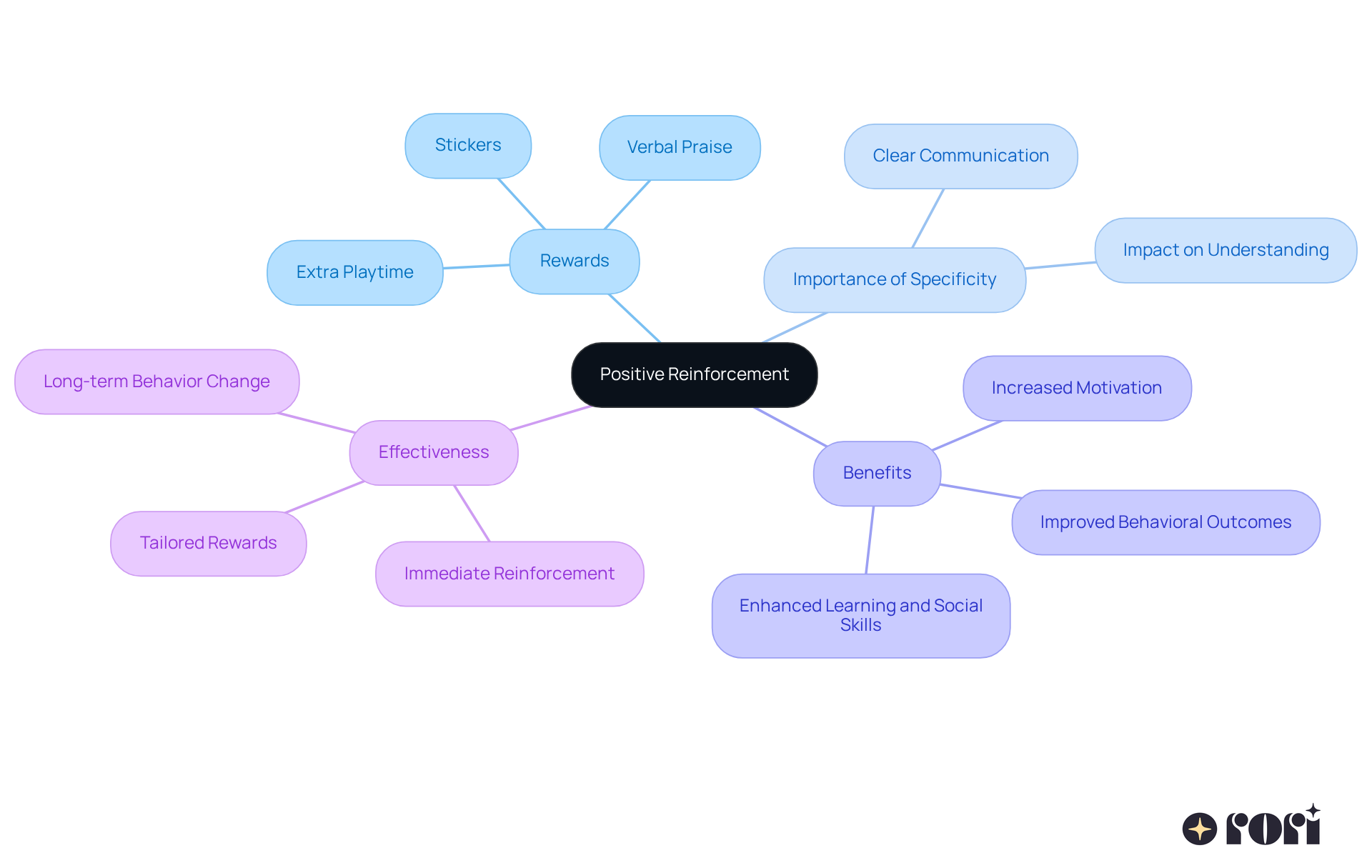
A Functional Behavior Assessment (FBA) is a systematic process designed to uncover the reasons behind a young person's challenging behaviors. This involves:
Our conduct care engine makes this process even better by performing functional conduct analysis for specific actions and skills. It generates automatic progress reports for clinicians to review, which is super helpful! This understanding empowers parents to implement effective behavior reduction strategies that address the root causes of behaviors, leading to more successful reduction efforts.
When suggested hours are fully utilized with active caregiver involvement, an impressive 90% of youngsters show significant improvement! Plus, the care engine adapts intervention and skill acquisition plans after each session based on the progress made, ensuring that strategies remain effective and tailored to each child's unique needs. Let’s explore this together!
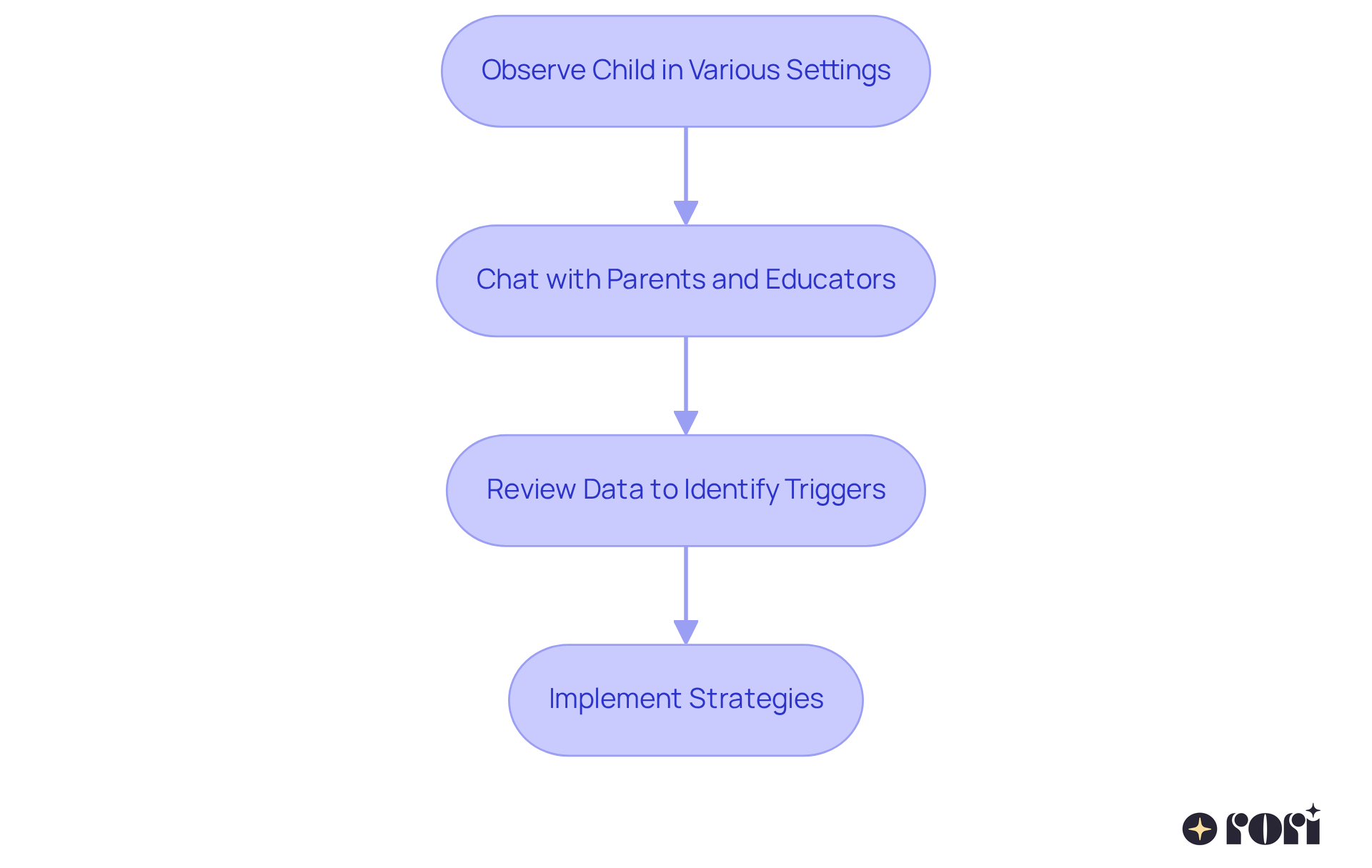
Parent training programs are so important for helping families learn effective management techniques! These initiatives often include workshops, personalized coaching, and a treasure trove of resources designed to teach parents how to use Applied Behavior Analysis (ABA) strategies right at home. By mastering the art of encouraging positive behaviors and managing the challenging ones, parents can create organized environments that truly foster their children's growth.
When parents actively participate, they become vital partners in their children's therapy, creating a unified approach to management. And guess what? Studies show that this kind of training can lead to significant improvements in youth behavior outcomes by implementing behavior reduction strategies. The effect sizes suggest moderate to strong benefits in areas like social skills and communication! As analysts point out, blending structured methods with consistent reinforcement is key to achieving lasting changes through behavior reduction strategies in kids.
Rori Care's workshops in 2025 are focusing more and more on these effective strategies, empowering parents to be proactive agents of change in their children's lives. Let’s explore this together! We're here to help you every step of the way!
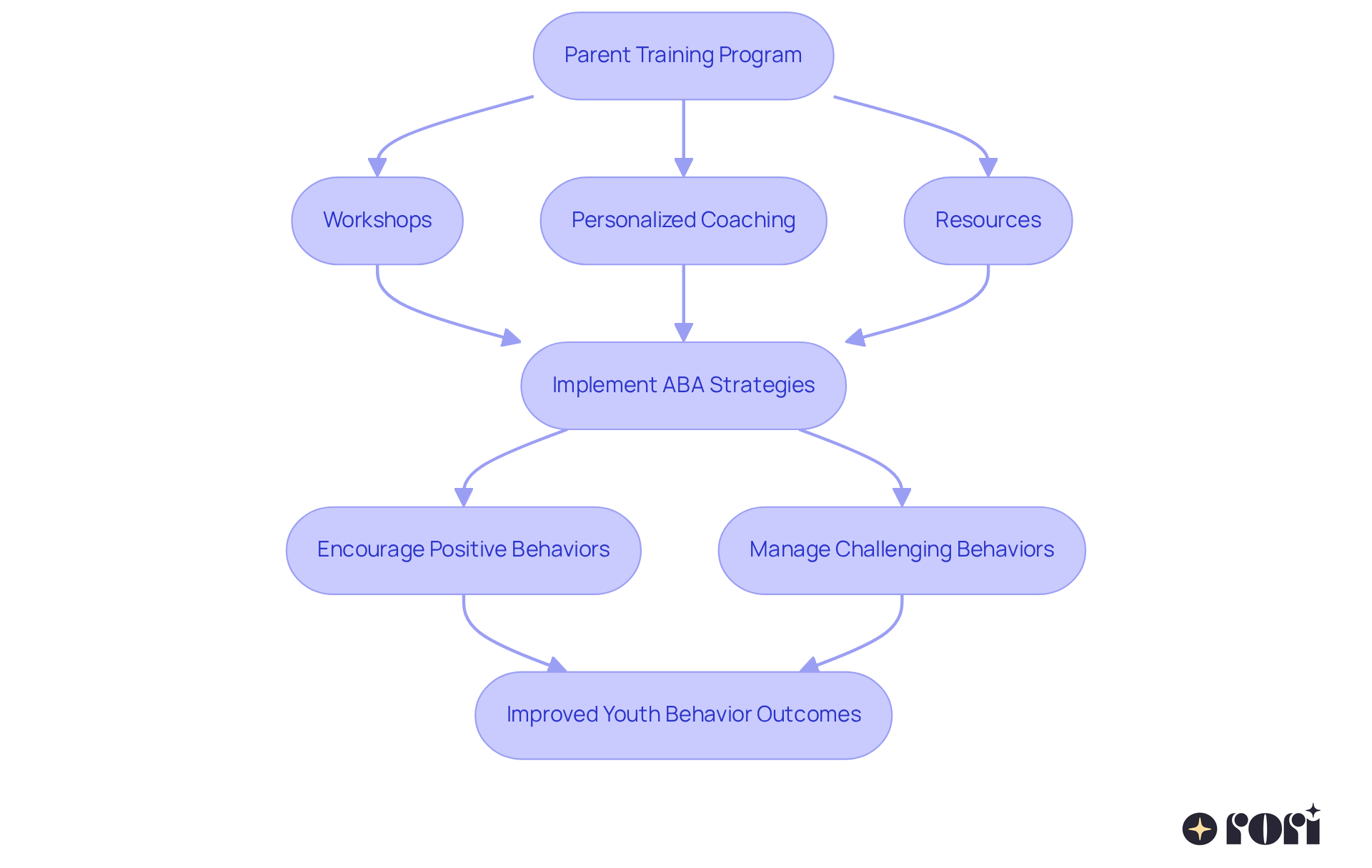
Creating an organized space for our kids means establishing consistent routines and clear expectations. This is a key part of Applied Behavior Analysis (ABA), a therapy tailored to meet each child's unique needs by applying learning and behavior principles. Think about it: having a daily schedule, specific spots for activities, and visual reminders of the day's events can really help! Reducing surprises not only brings stability but also helps kids feel secure, which can ease anxiety and minimize behavioral challenges by implementing behavior reduction strategies.
Moreover, skilled behavior analysts craft individualized plans that incorporate behavior reduction strategies into these structured environments. They focus on measurable goals and continuous evaluation to ensure that the approach remains responsive to each child's needs. This method not only creates a nurturing learning and living atmosphere but also supports the development of essential skills in our young ones. Let’s explore this together and see how we can make a positive impact!
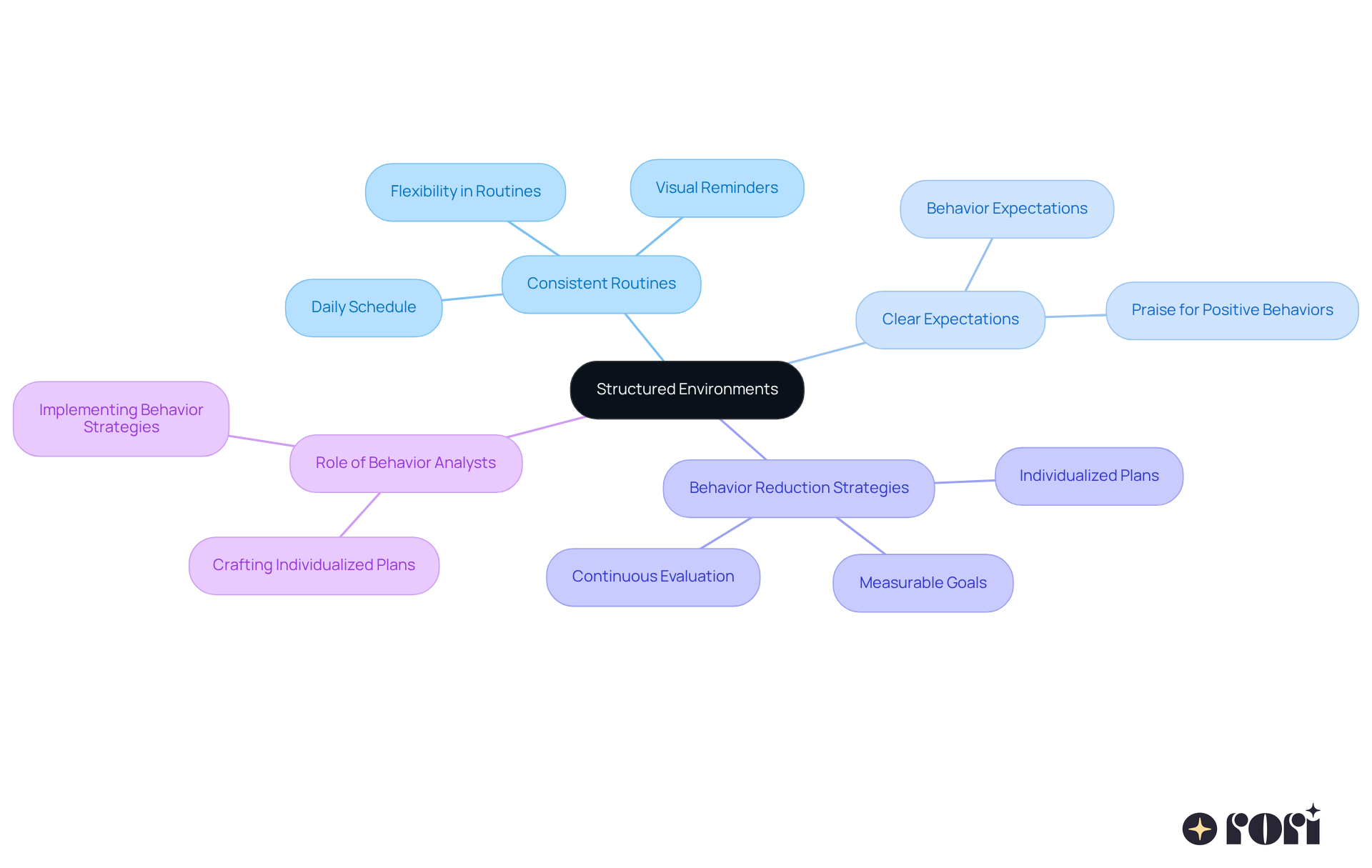
Social skills training is so important for helping young people learn how to interact appropriately with their peers and adults. It focuses on key lessons like sharing, taking turns, and picking up on social cues. When kids participate in organized practice, they not only build confidence but also enhance their ability to connect with others.
Research shows that better social interactions can significantly contribute to behavior reduction strategies aimed at reducing frustration and behavioral issues. As kids become more adept at navigating social situations, they face fewer challenges. For instance, behavior reduction strategies implemented in targeted programs have shown significant success in lowering conduct problems, especially in children around 9 to 10 years old.
Additionally, studies suggest that kids who develop strong interpersonal skills often experience less anxiety and greater self-esteem, which contributes to their overall emotional well-being. By nurturing these skills, parents can play a vital role in helping their children form meaningful relationships and utilize behavior reduction strategies to reduce the chances of behavioral issues. Let’s explore this together and see how we can support our kids on this journey!
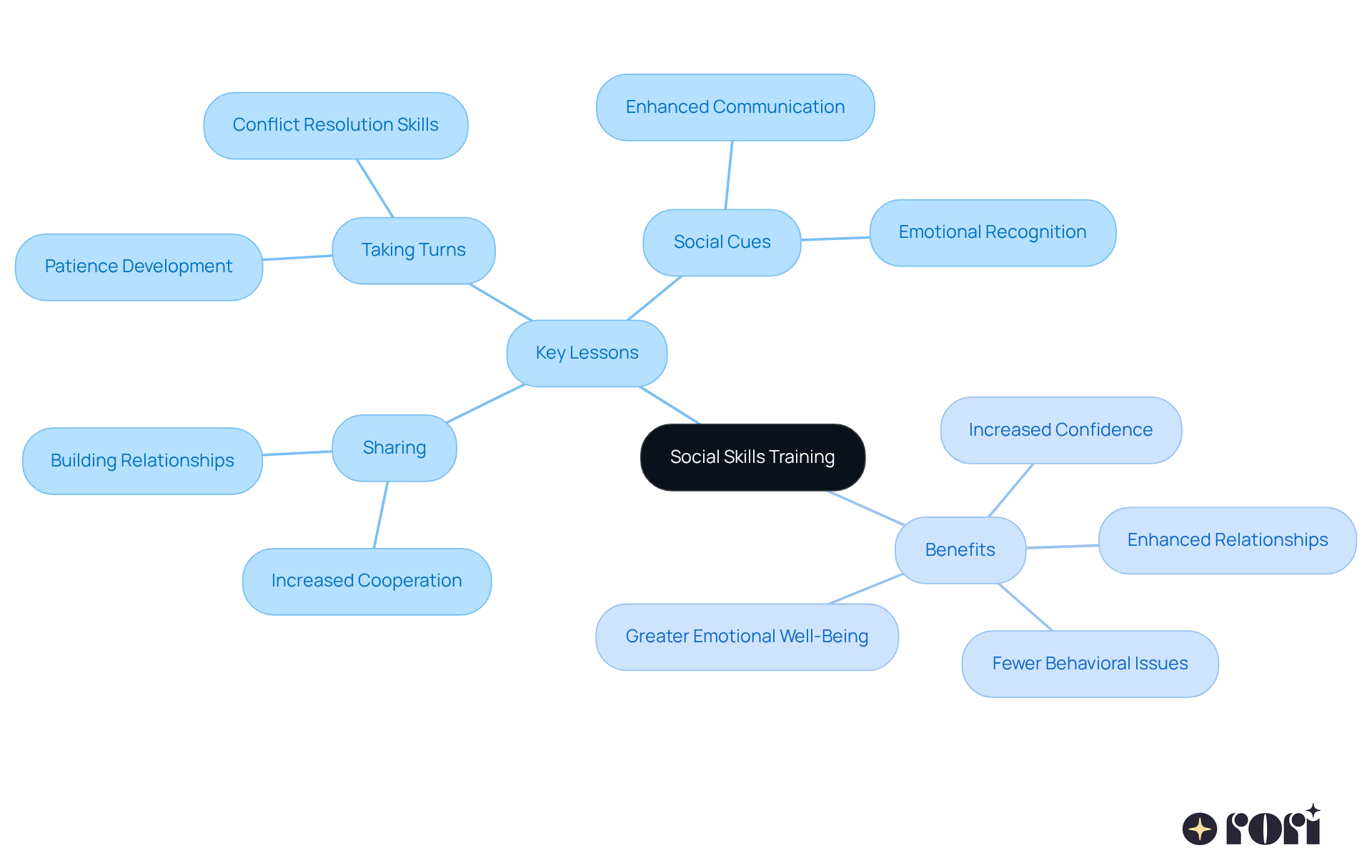
Collecting data is a systematic way to document a child's actions, looking at things like how often behaviors happen, how long they last, and the context in which they occur. This process is super important for evaluating how well behavior reduction strategies are working and for making informed adjustments along the way. With recent advancements in behavior tracking—like Scatterplot Analysis and Latency Recording—we can visualize behavior occurrences and assess how timely responses are to various cues. By consistently reviewing progress, parents and clinicians can spot trends, celebrate successes, and refine interventions to keep them effective and responsive to the child's evolving needs.
Effective data gathering not only promotes accountability but also helps caregivers actively engage in their loved one's therapeutic journey. It reinforces the importance of collaboration in achieving positive results. Research shows that when caregivers are actively involved in ABA therapy, about 90% of individuals make remarkable progress! Plus, personalized support tailored to individual needs leads to more meaningful outcomes. The behavior care engine even revises behavior intervention and skill acquisition plans to include behavior reduction strategies after each session based on the progress made. This ensures that interventions stay adaptable and responsive, fostering lasting positive change for individuals with autism. Let’s explore this together!
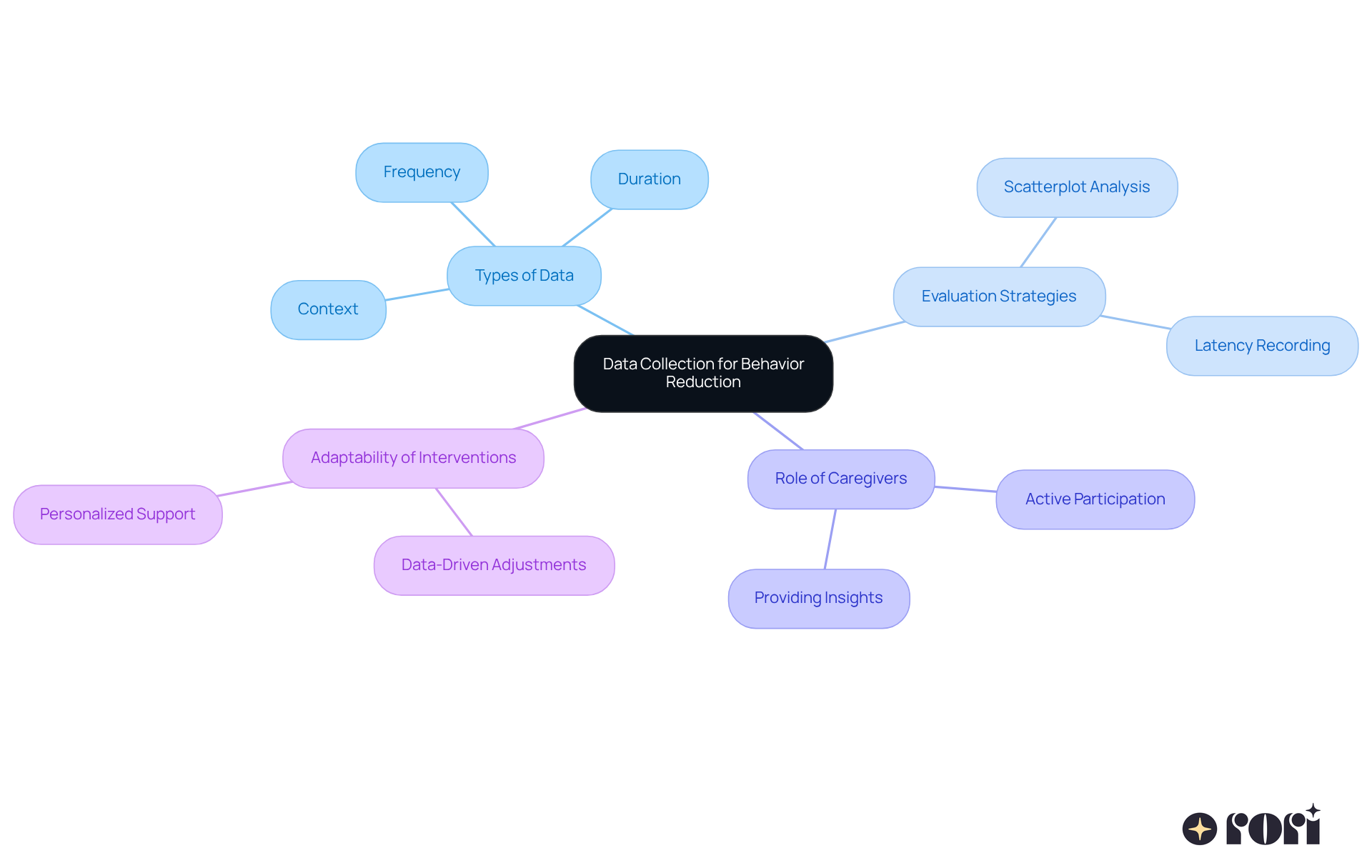
Visual aids, like picture schedules, charts, and social narratives, are truly essential for enhancing communication and understanding for individuals with autism. These tools provide clear visual representations of expectations and routines, which can really help reduce any confusion. By offering structured guidance, visual supports can ease anxiety and behavioral challenges, making daily interactions and transitions smoother.
Research shows that children with autism often respond well to visual aids, tapping into their strengths in visual processing. For example, using visual supports can boost engagement and comprehension, ultimately nurturing greater independence and confidence in everyday activities. Plus, with recent advancements like interactive digital tools and customizable schedules, these aids are becoming even more effective in implementing behavior reduction strategies. They are invaluable resources for both parents and educators!
Let’s explore this together! By integrating these visual tools into daily routines, we can create a supportive environment that fosters growth and understanding. Remember, we’re here to help you every step of the way!
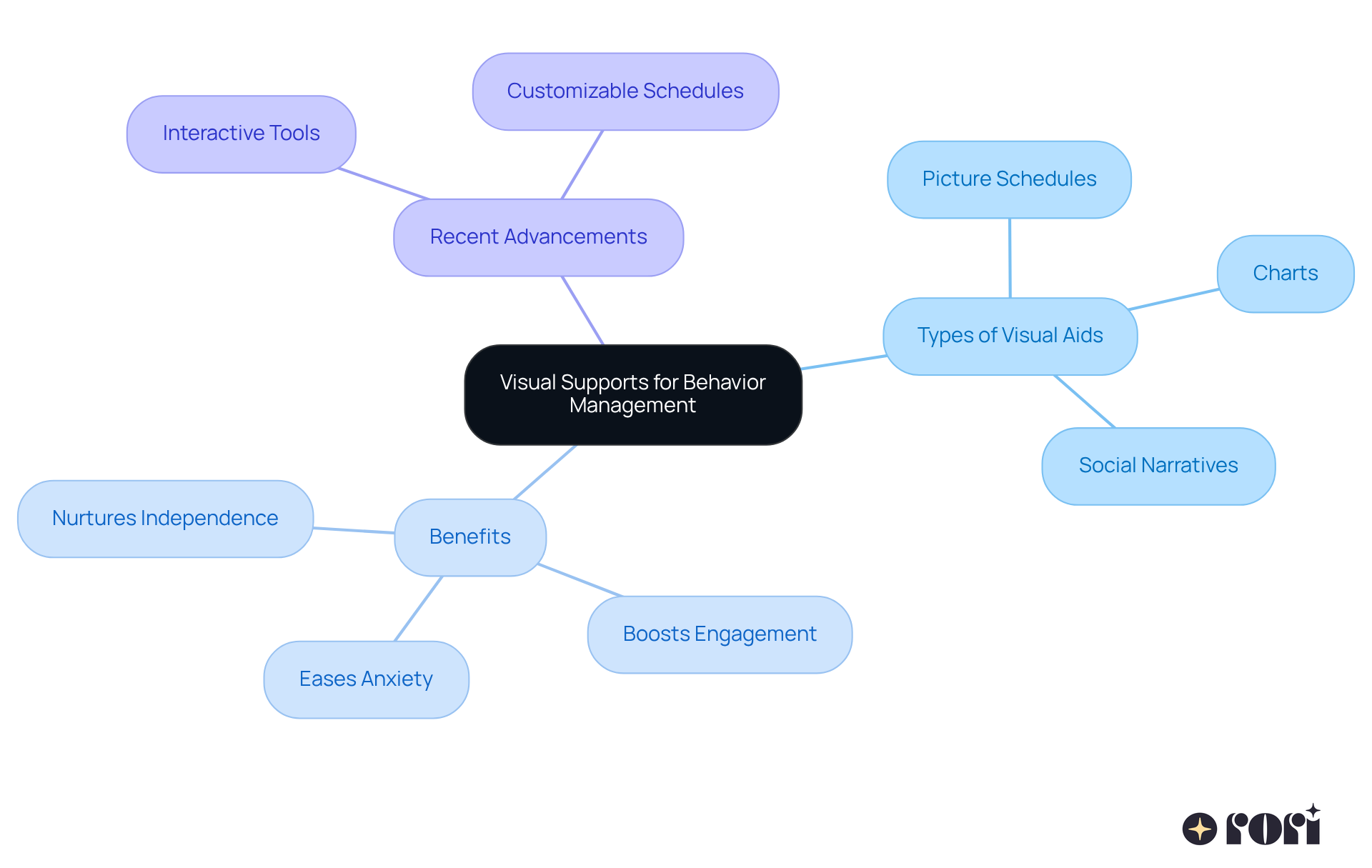
Consistency is key when it comes to applying reduction techniques! 😊 Parents, caregivers, and educators should team up to ensure that the same strategies are used at home, school, and in the community. This uniformity helps our little learners understand that expectations remain steady, no matter where they are. It reinforces their education and encourages those positive behavior changes we all hope for.
Regular communication among everyone involved is super important for implementing behavior reduction strategies and maintaining consistency. Plus, when caregivers are actively engaged, the results can be amazing! Research shows that 90% of young individuals see significant improvements when suggested hours are fully carried out with caregiver involvement. By grasping and applying ABA principles, caregivers can make informed choices that truly benefit their loved one's progress. This ultimately leads to better behavioral outcomes and a more supportive home environment. Let’s explore this together!
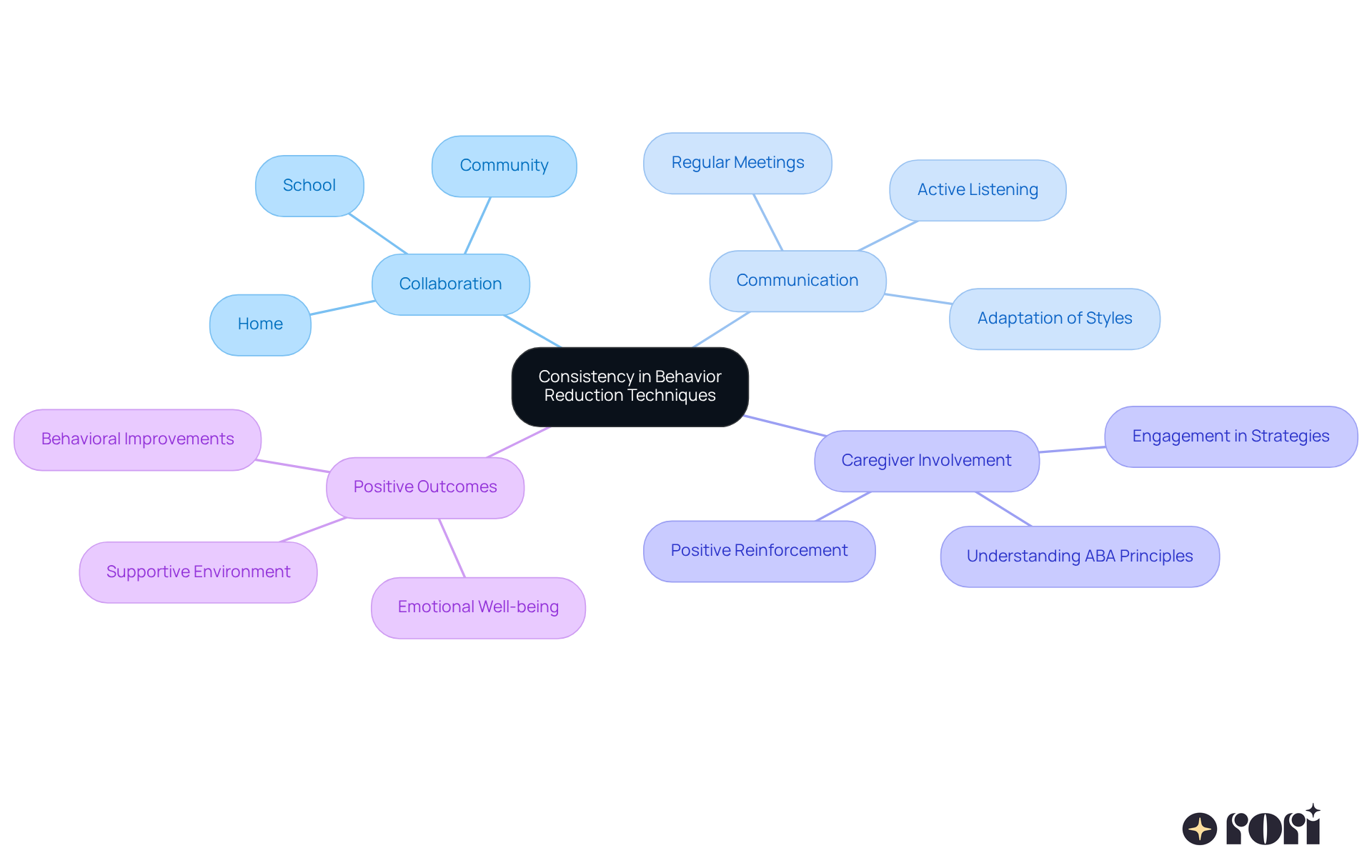
Cooperation with experts, like analysts and therapists, is so important for effective intervention! Regular meetings and open communication channels allow families to get expert advice and resources tailored just for them. This teamwork not only ensures that behavior reduction strategies align with family values but also allows for ongoing progress checks, creating a holistic approach to managing behavior.
Recent trends show that when parents actively participate, therapy becomes even more effective, leading to better emotional and developmental outcomes for our youth. Research highlights that collaborative practices among professionals can really optimize client outcomes and enhance clinical care. It’s all about teamwork! As one behavior analyst shared, 'When caregivers work closely with therapists, they help ensure that goals align with the family’s values and daily routines.'
This collaborative effort leads to wonderful outcomes, as families and professionals come together to create a supportive environment that fosters trust and active participation. Plus, caregiver education at Rori Care empowers families by providing them with ABA principles and behavior reduction strategies. This knowledge boosts their ability to support their child's behavioral goals through informed decision-making and active involvement.
However, it’s essential to recognize that challenges can arise in collaboration, like scheduling conflicts and communication gaps, which may affect the partnership's effectiveness. Let’s explore this together! We’re here to help you every step of the way!
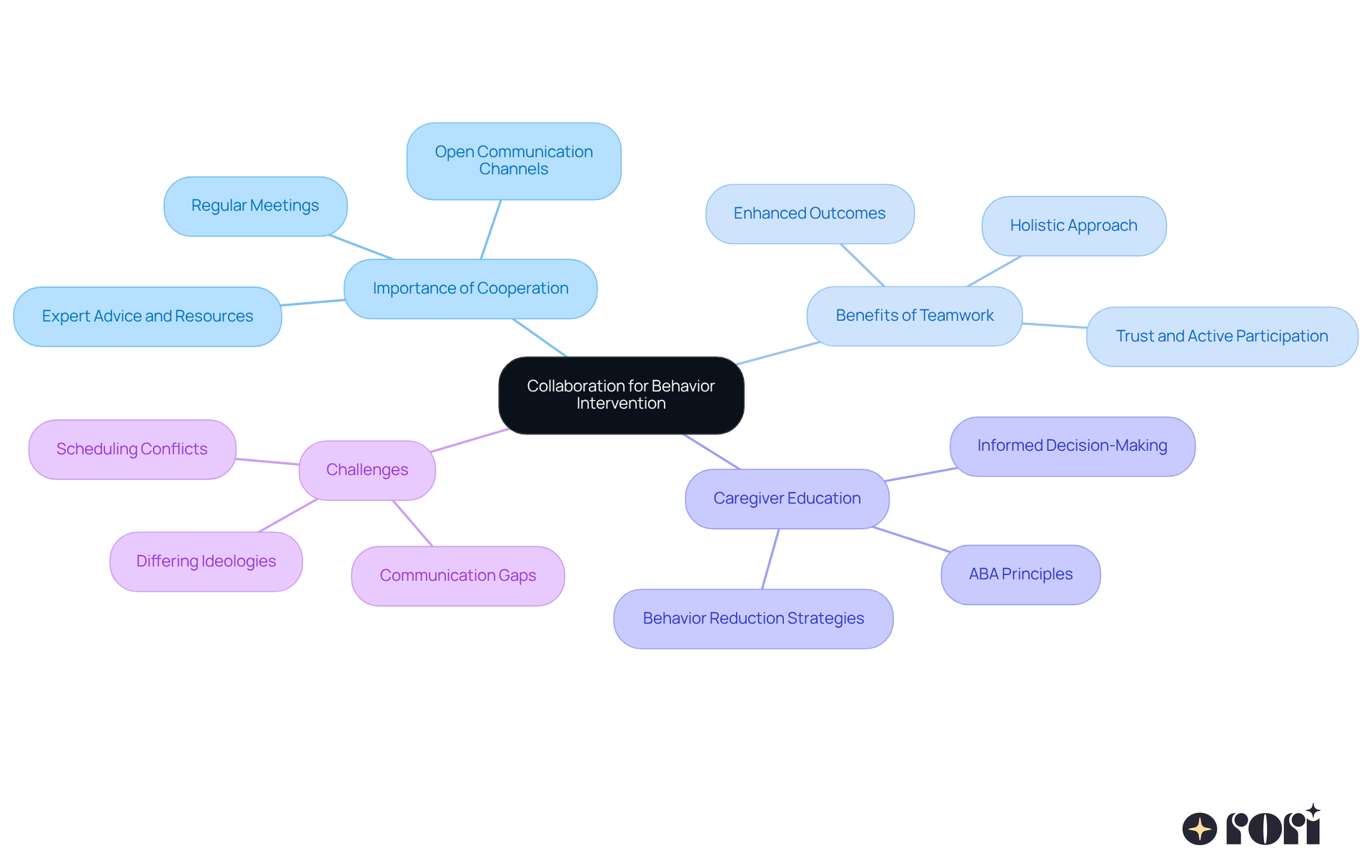
Implementing effective behavior reduction strategies is essential for fostering positive outcomes in children's development. By focusing on personalized approaches, like those offered through ABA therapy at Rori Care, parents can create tailored interventions that meet each child's unique needs. This individualized attention not only boosts the effectiveness of behavior modification but also empowers families to actively participate in their child's journey.
Throughout this article, we've highlighted key strategies that can make a difference. Think about the importance of:
Each of these elements contributes to a comprehensive framework that supports behavior management and encourages lasting positive changes in children.
As families embark on this journey, it's vital to recognize the profound impact that informed and collaborative efforts can have on a child's growth. By actively engaging in behavior reduction strategies and keeping communication open with professionals, parents can create a nurturing environment that promotes understanding and development. Embracing these approaches not only enhances the quality of care for children but also fosters a supportive community where families can thrive together. Let’s explore this together!
What is ABA Therapy and how does Rori Care implement it?
ABA Therapy at Rori Care involves creating personalized behavior reduction plans based on a thorough evaluation of each child's unique needs. Expert behavior analysts use data-informed insights to develop customized behavioral plans focusing on clear, measurable goals for behavior modification.
What is the success rate of ABA Therapy for children with autism spectrum disorder (ASD)?
ABA Therapy has an impressive success rate of over 89% for individuals with autism spectrum disorder (ASD), especially when families are actively involved and insurance coverage is in place.
How does Rori Care ensure that therapy is personalized for each child?
Rori Care ensures personalization through continuous assessment and adjustment of strategies based on the child's evolving needs. This includes measuring actions like frequency and duration to enhance therapeutic outcomes.
What role do parents and educators play in ABA Therapy?
Collaboration between parents and educators is crucial in improving ABA therapy results. Their insights into a child's progress and needs contribute significantly to the effectiveness of the therapy.
What is positive reinforcement and how is it used in ABA Therapy?
Positive reinforcement is an approach that involves offering rewards or incentives to encourage preferred actions in children. It can include verbal praise, tangible rewards, or privileges, and is used to boost the likelihood of desired behaviors occurring again.
Why is specific communication important in positive reinforcement?
Specific communication helps children understand which behaviors lead to rewards, fostering a sense of accomplishment and motivation, which enhances the effectiveness of the reinforcement.
How does prompt reinforcement affect behavior?
Prompt reinforcement after a desired action strengthens the connection between the behavior and the reward, solidifying positive behavior and encouraging lasting changes.
What is a Functional Behavior Assessment (FBA)?
A Functional Behavior Assessment (FBA) is a systematic process that identifies the reasons behind challenging behaviors by observing the child, discussing with parents and educators, and reviewing data to determine triggers and needs.
How does Rori Care's conduct care engine enhance the FBA process?
Rori Care's conduct care engine performs functional conduct analysis for specific actions and skills, generating automatic progress reports for clinicians to review, which helps in implementing effective behavior reduction strategies.
What are the expected outcomes when caregiver involvement is active in therapy?
When caregivers are actively involved and suggested hours are fully utilized, up to 90% of youngsters show significant improvement in their behaviors.